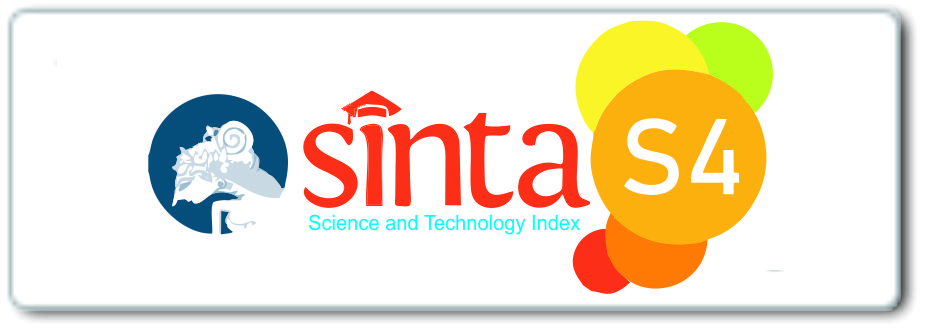TERTIARY ESL STUDENTS’ PERCEPTIONS ON THE ACQUIRED AND USED LANGUAGES ( A CASE STUDY AT UNIVERSITY LEVEL)
Abstract
Abstract
Language attitudes towards languages acquired and use in young generation is the main issue of this study, This study aimed to answer the following questions; 1. How do tertiary ESL students perceive their language acquisition and use? a. How do they rate their proficiency in each language? b.What language(s) are dominantly used ? for what purposes? In what settings? c.What do they think of their heritage language and its maintenance? 2. What efforts have they done to maintain their heritage languages and/or languages they acquired and use? a.What factors that motivate them to maintain their heritage languages and/or languages they acquired and use? b.What are the constraints in their efforts to maintain the languages? c. What strategies have they adopted in maintaning their heritage language?. The methodology used in this study is qualitative which employs 65 students of English department at fifth semester. The result of this study, all participants have positive attitudes towards the languages they acquired and used. Most of them perceive that they have to maintain their heritage languages, and some of them have done some efforts in maintaining it. Moreover, they also have the same problems in persevere their heritage language, that the languages are rarely used. So, in conclusion the students know that they have to something in maintaining the languages they have acquired and use, however, they did less action.
Key words: Heritage language, Language attitude, Language acquisition, Language use, Perceptions
Full Text:
PDFReferences
Alkaff, A,A., 2013., Students’ Attitudes and Perceptions towards Learning English. Arab World English Journal, volume.4 Number.2.106-121
Baker, Colin. 1992. Attitudes and Language. Clevedon: Multilingual Matters Ltd
Bohner, G. & Dickel, N. (2011). Attitudes and attitude change. Annual Review of Psychology 62(1): 391-417.
Campbell, R., & Peyton, J. K. (1998). Heritage language students: A valuable language resource. The ERIC Review, 6(1), 38–9. In King, K.A., & Kananen, J. E. (2013). Heritage Languages and Language Policy
Gardner, R.C. & Wallace E. Lambert. 1959. Motivational variables in second language acquisition. Canadian Journal of Psychology 13. 266-72.
Gardner, R.C. & Wallace E. Lambert. 1972. Attitudes and motivation in secondlanguage learning. Rowley, Mass.: Newbury House
Grosjean, F. (1982). Life with two languages. Cambridge, MA: Harvard University Press.
Holmes, J., Roberts, M., Vertvaki, M., & Aipolo, A. (1993). Language Maintenance and Shift in Three New Zealand Speech Communities. Applied Linguistics, 14(1), 1-24
Jendra, M. I. I. 2010. Sociolinguistics The Study of Societies’ Languages. Yogyakarta:Graha Ilmu.
Kansikas, M. 2002. “As Many Men, So Many Minds” – A Study of Language Attitudes towards Foreign Language on Finland. Finland:University of Jyväskylä.
Ladegaard, H. (2000). Language attitudes and sociolinguistic behavior: Exploring attitude behavior relations in language. Journal of Sociolinguistics, 4(2): 214-233.
Lambert, Wallace E., Howard Giles & Omar Picard. 1975. Language attitudes in a French -American community. International Journal of the Sociology of Language. Vol. 4. 127-152.
McGroarty, M. (1996). Language attitudes, motivation, and standards. In S. McKay & N.H. Hornberger (Eds.), Sociolinguistics and language teaching (pp. 3-46), New York, NY: Cambridge University Press
Pillai, S., Soh, W., & Yusuf, Y.Q. (2015). Perceptions about one's heritage language: The case of the Acehnese in Kampung Aceh and Malacca Portuguese-Eurasians in the Portuguese settlement in Malaysia. Kemanusiaan. Vol. 22, No. 2, (2015), 67–92.
Richards, J. C., Platt, J. & Platt, H. (1992). Longman dictionary of language teaching and applied linguistics. 2nd ed. United Kingdom: Longman.
Saneleuterio, E. (2015). Lèxic de la indumentària. Variables en l’adquisició lèxico-semàntica del valencià en 1er d’ESO. En N. Ibarra, J. Ballester, M.ª L. Carrió y F. Romero (Eds.), Retos en la adquisición de las literaturas y de las lenguas en la era digital (pp. 525-532). Valencia: Universitat Politècnica de València
Valdés, G. (2000). The teaching of heritage languages: An introduction for Slavic-teaching professionals. The learning and teaching of Slavic languages and cultures, Olga Kagan and Benjamin Rifkin (eds.), 375–403. Retrieved from http://webaddress.com
Wu, H, C, 2005 Attitude and Behavior toward Bilingualism for Chinese Parents and Children, Somerville; Cascadilla Press
Zhang, D, & Slaughter-Defoe, Diana T. (2009). Language attitudes and heritage language maintenance among Chinese immigrant families in the USA. Language, Culture and Curriculum, 22(2), 77-93.
DOI: http://dx.doi.org/10.31000/globish.v11i2.6575
Article Metrics
Abstract - 1053 PDF - 27Refbacks
- There are currently no refbacks.
Globish
Program Studi Pendidikan Bahasa Inggris
Fakultas Keguruan dan Ilmu Pendidikan
Universitas Muhammadiyah Tangerang
Jl. Perintis Kemerdekaan I/33, Cikokol
Kota Tangerang, Indonesia
e-mail: globish_journal@umt.ac.id
Globish (p-ISSN: 2301-9913 | e-ISSN: 2301-9913) is licensed under a Creative Commons Attribution-ShareAlike 4.0 International License.









